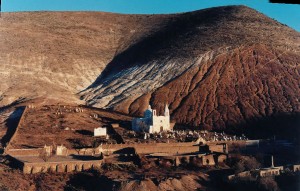 The village is located in the state of San Luis Potosi in northern Mexico, is a semi-abandoned town in the desert. It is a colonial mining town that currently is almost uninhabited because the production in the mines stopped, the veins were almost empty and people began to leave the town searching for work.
The village is located in the state of San Luis Potosi in northern Mexico, is a semi-abandoned town in the desert. It is a colonial mining town that currently is almost uninhabited because the production in the mines stopped, the veins were almost empty and people began to leave the town searching for work.
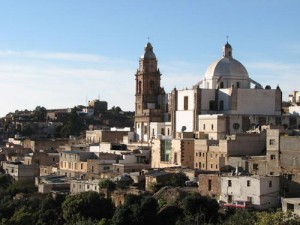 In 1733 it was discovered the first silver vein, but later, in 1744, the village was burned by indigenous groups who were trying to defend themselves from the war of extermination conducted by the Spanish. The town was rebuilt in 1767, thanks to the discovery of new veins of silver in the place, which led to a crowd of miners and adventurers came to the place in search of luck, unleashing a veritable fever of silver in totally unfavorable conditions: no roads, there was no water and supplies were difficult. All this helped later to improve transport links between the capital and Catorce, and the construction of its most representative buildings.
In 1733 it was discovered the first silver vein, but later, in 1744, the village was burned by indigenous groups who were trying to defend themselves from the war of extermination conducted by the Spanish. The town was rebuilt in 1767, thanks to the discovery of new veins of silver in the place, which led to a crowd of miners and adventurers came to the place in search of luck, unleashing a veritable fever of silver in totally unfavorable conditions: no roads, there was no water and supplies were difficult. All this helped later to improve transport links between the capital and Catorce, and the construction of its most representative buildings.
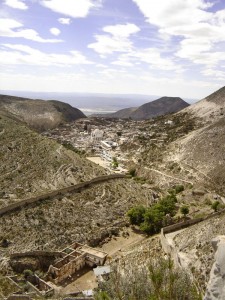 In 1778, the richest veins were discovered and in 1779 was founded the town called the « Real de Minas de Nuestra Señora de la Limpia Concepción de Guadalupe de los Alamos de Catorce » becoming one of the most prosperous thanks to the extraction of minerals such as copper, lead, sulfur, mercury, asbestos, serpentine, and of course silver. In 1920, the population dropped to 300, after some years earlier had nearly 15 000. At present about 1000 inhabitants reside, which gives the status of “ghost town”. From the early
In 1778, the richest veins were discovered and in 1779 was founded the town called the « Real de Minas de Nuestra Señora de la Limpia Concepción de Guadalupe de los Alamos de Catorce » becoming one of the most prosperous thanks to the extraction of minerals such as copper, lead, sulfur, mercury, asbestos, serpentine, and of course silver. In 1920, the population dropped to 300, after some years earlier had nearly 15 000. At present about 1000 inhabitants reside, which gives the status of “ghost town”. From the early 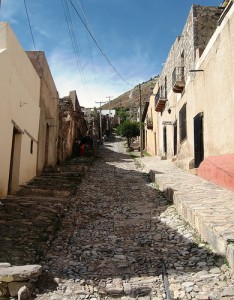 nineteenth century until today is known as Real de Catorce, or Catorce.
nineteenth century until today is known as Real de Catorce, or Catorce.
Real de Catorce has become an important tourist destination on the international level. Continuously receives a visit from national and foreign tourists, attracted by its history and mystery, as well as the many miracles that he was endorsed to the patron saint of the region, Saint Francis of Assisi, known affectionately by the locals “Panchito” or “El Charrito” There is a legend that every year they have to change the sandals to the statue of the Saint, because they appears as if he had wearing them for a long walk, so people think that he is walking around helping people to the needy.
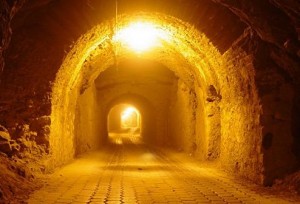 It was named Pueblo Mágico (Magical Town) in 2001. This is because it is a place with Symbolism, Legends, History, Important Events, Magic in its Social and Cultural Manifestations, with great opportunities for Tourism. The most important tourist attractions are the Ogarrio Tunnel, the Palenque, the Church of the Immaculate Conception, mines; streets are places of singular charm and viewpoint.
It was named Pueblo Mágico (Magical Town) in 2001. This is because it is a place with Symbolism, Legends, History, Important Events, Magic in its Social and Cultural Manifestations, with great opportunities for Tourism. The most important tourist attractions are the Ogarrio Tunnel, the Palenque, the Church of the Immaculate Conception, mines; streets are places of singular charm and viewpoint.
The tunnel Ogarrio is the main entrance to the village and was opened in 1901, has a length of 2.3 km long.
In the main square of Catorce are located the main buildings as the Parish of the Immaculate Conception which took 24 years for building or the city hall. Also at this place all the week-ends is installed the traditional market where tourists can find all kinds of crafts, clothes and rustic furniture.
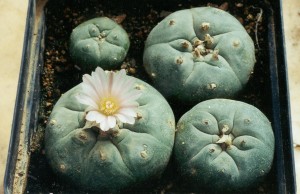 In the lowlands of the Sierra is located in the natural reserve Wirikuta, sacred land of the Huichol ethnic group, they collect and use for their ceremonies the híkuri, better known as peyote, a very famous kind of cactus.
In the lowlands of the Sierra is located in the natural reserve Wirikuta, sacred land of the Huichol ethnic group, they collect and use for their ceremonies the híkuri, better known as peyote, a very famous kind of cactus.
The main activities that can be done here are excursions and camps, hiking, mountain biking and motorcycling.
